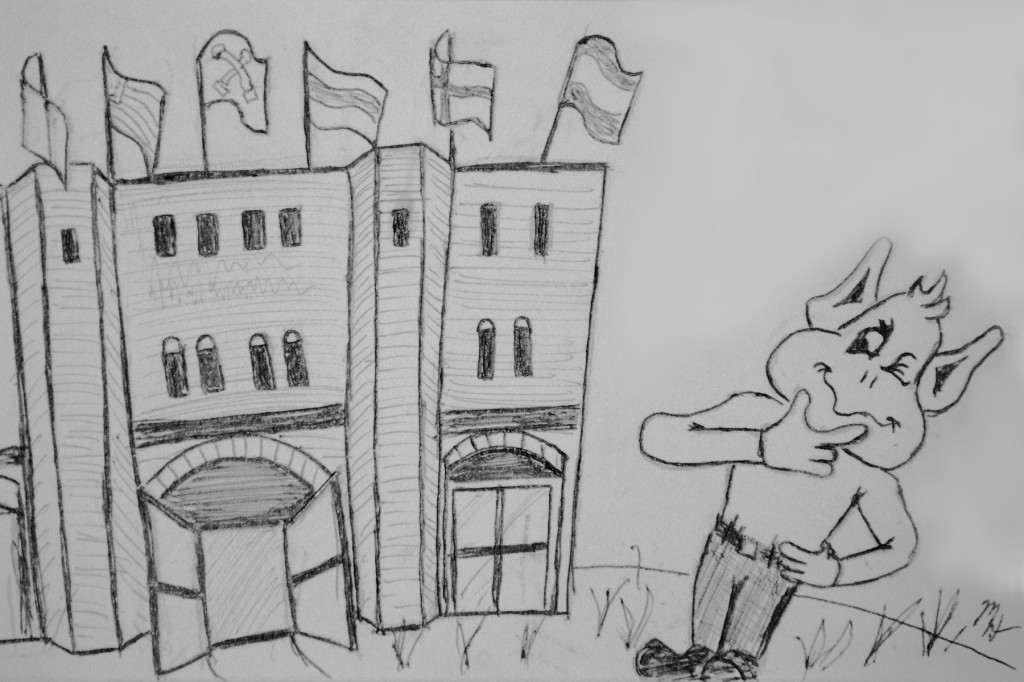College is about asking questions and thinking critically. As students at Saint Louis University, we would like to think that we’ve learned these skills. So perhaps it’s natural that we should turn our collective critical eye toward the very system that helped us develop them—the higher education system in the U.S. What did we expect out of college? And what is the reality?
Most people say that higher education isn’t just a means to obtain a better job and earn a fat paycheck. Education opens horizons, builds better citizens and can help people lead more fulfilling lives. And of course, college can be fun.
But at the end of the day, economics is always a factor. If, for some reason, a college degree couldn’t help you get a better job or increase your lifetime earning potential, most people probably wouldn’t go. As enriching and enjoyable as college can be, it’s not something that most people would purchase as a luxury.
Fortunately, we live in a world where a bachelor’s degree still improves your career prospects. But the benefits of going to college aren’t always the same ones that are advertised in the recruitment pamphlets. Ostensibly, students come to college to learn the material on the syllabi. Grades are an ever-present concern, making classroom performance a top priority.
But learning academic subjects is not the only, or even the principal, benefit of going to college. Classroom learning isn’t necessarily what makes a college graduate a valuable employee. In fact, many employers report that college doesn’t teach students the practical skills necessary for a profession; once hired, recent graduates have to learn the ropes while on the job.
Certainly the concepts taught in college courses provide many students with the theoretical underpinnings for their chosen occupations. But it seems that some of the greatest lessons students learn in college aren’t taught in the classroom at all. Social skills, financial responsibility, discipline and meeting deadlines are perhaps the most important things that students learn in college, especially at a four-year university.
This isn’t exactly what universities paint on their billboards, though. “How to deal with bureaucracy” and “How to set your own schedule” don’t sound quite as sexy as “Neuroscience” or “International Business.” Still, the former are just the skills that are necessary to get by in modern society, regardless of which career path you choose. Many of these skills are best gained through extracurriculars, a fact that employers recognize. In this economy, good grades aren’t enough to land a job any more. It’s important to demonstrate commitment to organizations and projects outside the classroom.
Moreover, as cynical as it may sound, sometimes going to college isn’t about learning at all. To some extent, higher education is a credentialing service. The diploma itself is almost as important as the learning it’s supposed to represent. And the value of those credentials varies; it could be argued that attending an expensive school is worthwhile, not because of the improved learning experience, but because of the brand recognition associated with the degree. When it comes to finding employment, the brand name matters. In an interview, it’s a lot easier to flash a fancy alma mater than it is to convince an employer that you’re an intelligent and hardworking individual.
It used to be that a bachelor’s degree was essentially a ticket to a high-powered career. Today, that isn’t necessarily the case. College is a great experience for many people, but it isn’t for everyone. And even those that do attend shouldn’t feel obligated to attend an expensive four-year university; community colleges and studying part-time are great options for those seeking an affordable degree.
As students already enrolled at SLU, this discussion may seem moot. But by considering what we want from our college experience, we can try to make the best of it. And perhaps our insider perspective can help those still deciding which path is right for them.





